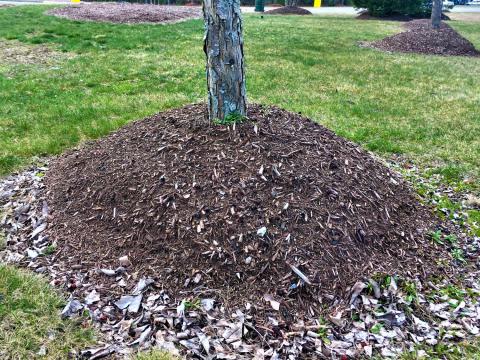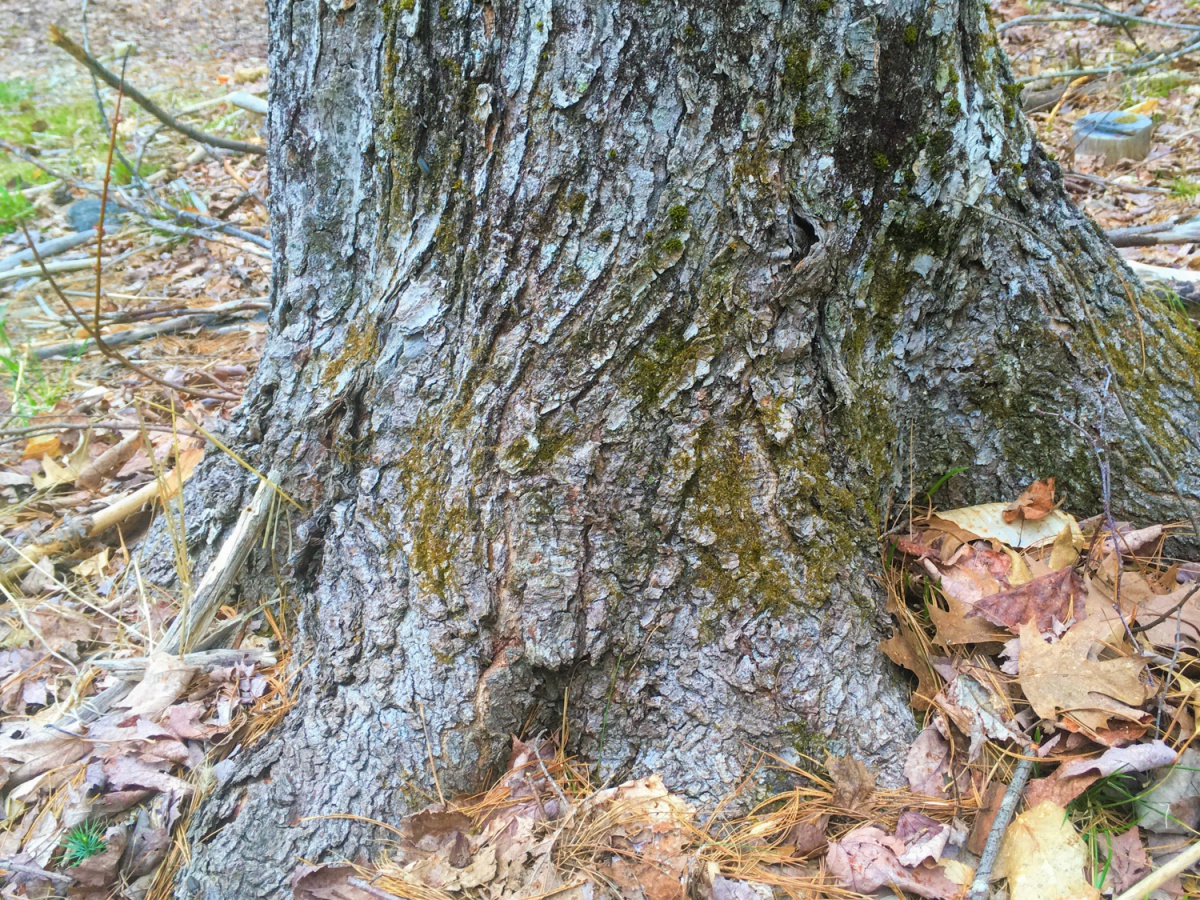Volcanoes Kill Trees!

New Hampshire always observes Arbor Day on the last Friday of April. With social distancing, celebrations may be a bit different this year; however, many New Hampshire residents are still feeling inspired to plant or care for trees in their yards and communities. Mulching is one important, and seemingly simple, task that can benefit trees. But, with improper technique, you might be hurting – or even killing – your favorite tree.
The benefits of properly mulching landscape trees with organic material, such as bark or wood chips, is well known. Mulch inhibits weeds, helps retain soil moisture, enriches the soil as it decomposes, and may moderate soil temperatures. Perhaps even more importantly, a circle of mulch around a tree can help protect it from errant lawnmowers and string trimmers. In addition, many people like the neat, manicured look that mulch gives to a landscape. Maybe that is why it is so common to see giant mounds of mulch piled up high against the trunk of trees? A quick drive to the local shopping center or big-box store will probably reveal “volcano mulching.”
Volcano mulching is an improper tree care technique where, year after year, mulch is piled against the trunk of a tree. Properly planted trees (or naturally grown trees) will develop a characteristic root flare near ground level. Volcano mulch buries the root flare or, in young trees, prevents a proper flare from ever developing. Trees without proper root flare lack stability and are more prone to windthrow. Mulch piled against a tree’s stem also encourages disease and decay because the bark is almost always wet. To make matters worse, huge piles of mulch interfere with good root development. For example, if the top few inches of soil are always moist, roots may not spread deeply into the soil. During a summer drought, your tree may be left high and dry!

So, what is proper mulching technique? Spread a layer of mulch 2-4 inches thick under your trees making sure that no mulch touches the trunk. For younger or newly planted trees, spread mulch out to the dripline (the outermost part of the tree’s canopy where water drips onto the ground). For older, well-established trees try the “3-3-3 Rule.” Spread a 3-inch layer of mulch in a 3-foot donut around the tree making sure to leave at least 3-inches between the mulch and tree stem. With a little know-how, properly mulching trees really is a simple task that will enhance the health of your trees.
If you have questions about planting, mulching or caring for your trees, contact your County Forester.
